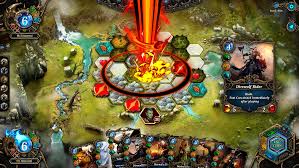Digital card games are at a crossroads. While live-service ecosystems dominate gaming, DCGs are reintroducing more thoughtful, strategy-driven experiences that feel refreshing in a market worn thin by paywalls and constant grind.
The appeal of Digital card games isn’t nostalgia – it’s structure. Deck building, turn-based tactics, and slower pacing offer game design clarity that contrasts sharply with opaque loot boxes and seasonal gates. Players tired of chasing ever-shifting meta patches are gravitating toward titles with deck synergy, predictable updates, and real strategic depth.
However, the space is crowded. Major publishers push brand-name tie‑ins, while indie studios experiment with roguelike mechanics or community‑driven content. Standout titles blend deck-building with narrative arcs, in‑game seasons, and lighter monetization. But others fall into redundancy – repeated mechanics, stale balance patches, and monetization fatigue.
If DCGs evolve, they have the opportunity. By integrating streaming features, rewarding innovative card design, and curating community feedback, developers could redefine digital card experiences away from live‑service anxiety and toward meaningful gameplay.
Why Digital Card Games Feel Like a Blessing Right Now
Players overwhelmed by forced daily logins, rotating combat feeds, or opaque battle passes find relief in card games. DCGs reward practice, knowledge, and creativity, not time sunk. A well-crafted deck can outplay hours of levelling; meaningful adjustments in individual cards can reshape strategies without reworking entire loadouts.
This shift matters because live-service titles increasingly demand daily maintenance. DCGs offer a reset button – a chance to engage on your own terms, with progress tied to skill rather than hours played or wallet depth. They’re fundamentally more inclusive.
What Works and What Doesn’t in the Current DCG Landscape
Successful DCGs embrace modular design: expansions that introduce new mechanics rather than only new cards, seasonal balance patches that reward creativity, and matchmaking based on skill tiers. Titles that combine single-player challenges, narrative modes, or roguelike progression help maintain engagement without repetitive grinding.
Conversely, DCGs that feel stale often fall into predictable traps. Paid-only card packs, pay-to-advance roadmaps, or repeat-heavy unlock systems push players away fast. Similarly, a lack of transparency in balancing or a failure to support mid-meta creativity leads to stagnation.
Mobile Momentum Keeps Card Games Thriving
It’s impossible to talk about digital card games without acknowledging the massive role of mobile platforms. Whether it’s competitive titles like Marvel Snap or casual favorites like Clash Royale, these games thrive thanks to short play sessions and touchscreen-friendly mechanics. Mobile accessibility lowers the barrier to entry for newcomers while still offering deep gameplay for veterans.
Developers are optimizing for smartphones first, and it’s working – millions of players engage daily without ever touching a PC or console. As mobile hardware gets more powerful, expect even richer digital TCG experiences on the go, without sacrificing quality or strategy.
DCGs and Streaming Culture: A Revival Strategy
If there’s one group suited to build Digital Card Games forward, it’s streamers and content creators. Deck-building challenges, viewer interactions, and community events breathe life into card ecosystems. Games like this can thrive on organic creativity.
Integration of tools like spectator mode, deck sharing, and in-game commentary hubs could turn DCGs into social experiences, not just solo rituals. When creators can teach strategies while playtesting expansions on stream, fans stick.
Our Final Take
Digital collectible card games are gaining relevance again – not because they’re the only option, but because they offer grounded design in an otherwise chaotic live-service world. Titles that value creativity, community, and clarity over endless updates and monetization fatigue will win players back.
Live-service games may continue to dominate headlines, but DCGs remind us that engaging gameplay doesn’t require constant churn. Sometimes, simple turns and thoughtful cards are exactly what players need next.

